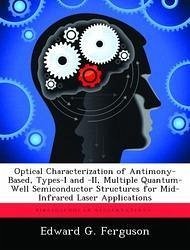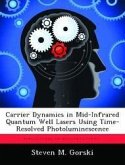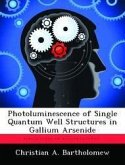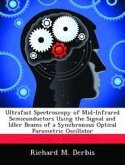This experiment characterizes antimony-based, multiple quantum-well, types-I and -II, semiconductor samples designed for laser applications. The samples emit light in the 3-5-µm range to exploit an atmospheric transmission window, making them ideal for infrared (IR)-seeking missiles countermeasures. Photoluminescence (PL) spectra were collected and yielded bandgap (Eg) dependence-on-temperature relationships. The type-I sample was found to follow the Varshni equation, while the type-II samples showed a rise with temperature in a portion of the curve that should be linear according to the Varshni equation. The type-II samples followed the Varshni equation well at higher temperature. The PL study indicated that the type-I sample had better efficiency than the type-II samples, and that there is some change in efficiency with the waveguide nature of the sample. Carrier temperatures (Tc) were derived from the PL study, all the samples for which Tc was derived operated in the optical phonon regime. The PL data was compared to the "FEMB" computer model and some correlation between the two in recombination energy was seen. A time resolved photoluminescence (TRPL) experiment was conducted using the frequency upconversion technique. The experiment clearly found the upconverted signal, but there was a systematic error that prevented any further analysis of the data.








